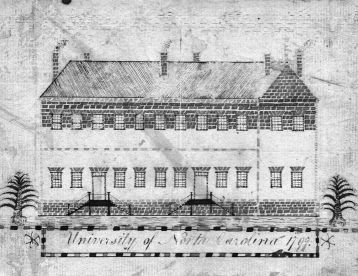20 Sept. 1776–22 Aug. 1847

Hinton James, first student of The University of North Carolina, engineer, and legislator, was born in that part of New Hanover County that became Pender County in 1875, the oldest of five children of John and Alice James. The family lived on a portion of the land set apart in 1725 by the Lords Proprietors for Welsh settlers, subsequently known as the Welsh Tract.
On 12 Feb. 1795 James became the first student of The University of North Carolina, which had opened its doors on 15 January. He was the only student for two weeks. James had an outstanding record at Chapel Hill. At the time, original essays were printed in a record book and those of James frequently appeared, including "The Motions of the Earth," "The Slave Trade," "The Pleasures of College Life," and "The Commerce of Britain." He was a member of the first literary club, the debating society, and the Concord or Philanthropic Society. On 4 July 1798, he was awarded the bachelor of arts degree in engineering as one of seven students in the university's first graduating class.
James became an assistant to Hamilton Fulton, an engineer from Scotland hired by the state to make improvements on the rivers of North Carolina to aid navigation. James was put in charge of channel improvements on the Cape Fear River, the first such project undertaken there. In 1807 he was elected to the state legislature and served three terms. He also served as mayor of the town of Wilmington. At the time of his death, he was clerk and treasurer of the city of Wilmington and a magistrate for New Hanover County.
James was buried in the cemetery of Hopewell Presbyterian Church, near Burgaw, in the community where he was born. He was married three times and two of his wives, Mary Ann Watson and Sarah Moorehead, were buried beside him. The name and burial place of his third wife is unknown. A historical marker was erected by the North Carolina Department of Archives near his grave, and a dormitory at The University of North Carolina was named in his honor.